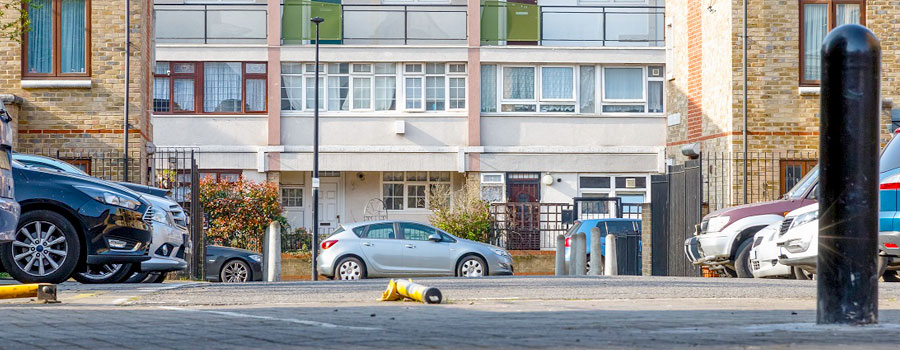Strata Parking – Who’s who in the Parking Zoo?

Parking spaces in residential strata buildings are a very sensitive and often hotly contested topic.
Most strata buildings have parking spaces allocated to residential lots and a few visitor parking spaces.
In New South Wales, for example, the New South Wales Department of Planning and Environment, has issued SEPP 65 and the Apartment Design Guide to help developers and planners work out how many parking bays are required for new developments. In addition, the NSW Department of Planning has also issued the Guide to Traffic Generating Developments, to provide statistics and matters to be considered when planning new residential developments and allocating parking bays. New residential buildings should take into consideration the surrounding public transport options and frequencies as well as the proximity to public places such as grocery stores.

Beyond these guidelines, it is ultimately up to the Local Government Authority or Council approving a new development application, to determine the final number of parking bays, whether they be visitor or disabled 1, that are required for a new residential development.
That being said, it is important to understand the rights of owners/residents and visitors when it comes to how, where and when individuals can park.
Where can an owner park?
According to NSW Fair Trading, owners and residents can only park in areas that have been allocated to them. This is typically the parking space assigned on title to their strata lot, or if they are able to rent an additional or alternative parking spot from someone in the building, then, that owner or resident can use that dedicated space as well.
Owners/ residents CANNOT use parking spaces that have been specifically allocated to emergency vehicles, loading dock areas and visitor parking, to park their own vehicles in. In New South Wales this is specifically addressed by the NSW Department of Fair Trading. Only visitors are allowed to parking in visitor parking bays, and residents can only park in resident parking bays.
This becomes very problematic in many buildings when residents abuse the common property visitor parking bays for permanent parking for their second or third vehicle – so like an extra free parking bay. This contentious issue causes so much frustration and angst in strata buildings.
How do strata buildings manage residents abusing visitor parking?

Some strata buildings rely on goodwill and trust that their residents will abide by the rules and won’t outstay their welcome. Others, who have had poor experiences, will set a time limit on visitor parking. This is all done through signage and enforced through the by-laws.
For example, in New South Wales, standard By-law 1 of the Strata Schemes Management Regulation 2016 states that:
“An owner or occupier of a lot must not park or stand any motor or other vehicle on common property except with the written approval of the owners’ corporation”.
Many strata schemes in NSW have adopted this by-law prohibiting apartment owners from using visitor parking spaces at all without express written permission.
In some instances, the common property rights by-law allows for owners and residents to apply to park on common property if no parking space has been allotted to them.
Either way, it’s very clear that visitor parking is common property and use is restricted to bona fide visitors!
So where can strata parking visitors park?

Clearly, in visitor parking bays!
And for how long can they park?
For visitors to a residential strata property, there isn’t any Government legislation regulating the use of visitor parking bays. In general, the time limit and regularity for people using the visitor parking bays is up to the Owners’ Corporation.
Some Strata buildings have timed parking spaces for visitors, and notify visitors about this often by signage around those spots. If there aren’t any signs, then visitors can park in visitor parking bays for a reasonable amount of time. [Source]
Residents and tenants CANNOT park in visitor parking on a permanent basis. Doing so will also likely cause them to breach the condition of the development consent for their building if this means that the minimum required visitor parking spaces are not available for visitors.
This pain-point around the abuse of visitor parking bays is something we at thatsmyspot.com.au are asked to help out with all the time.
We believe that visitors’ parking is exactly that. It’s parking spaces that are allocated (and under the development application when the building was first built) for the use of family, friends, trades and others visiting owners and tenants of the building. It’s when people abuse this privilege that things can get messy. If you believe that someone is abusing the visitors’ parking spaces in your building, then there are steps you can follow to address this. These are outlined in our next blog post.
At thatsmyspot.com.au, we are experienced in helping solve visitor parking issues in residential strata buildings and have a range of solutions with different price points to do this.
Find out more about what measures you can legally take to maintain visitor parking in your residential strata building in our next blog post.
Please contact us if you’d like to chat more about your particular situation and how we can help solve your visitor parking pain points.
- For up to 1,000 parking bays, one in every 50 parking bays is required to be a disabled parking bay. After 1,000 parking bays, the minimum requirement drops to one in every 100
